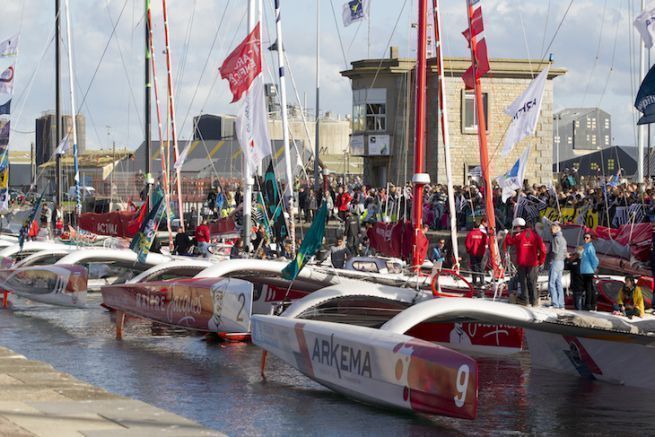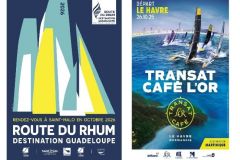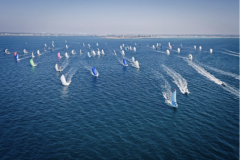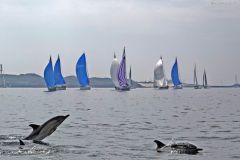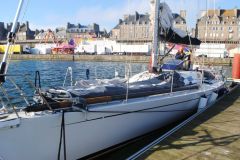Why was it created?
In the 1970s, sailing was a British sport. Of course, Eric Tabarly was French, but his victories were mainly on the other side of the Channel, especially in the Transat created in 1960. Worried about the escalation of arms, the British decided to limit the size of the boats to 17.06 meters so that the idea of a "transatlantic race without limits" was born May 25, 1977, the Route du Rhum was officially presented to the tricolored press.
Why is it called that?
From its first edition, the race was named after this alcohol made from sugar cane. But you have to go back three years before to know the details. Originally, a need to restore the image of Guadeloupe after the eruption of the Soufrière in 1976 which had led to the evacuation of the southern part of Basse-Terre. For the West Indies Rum Sugar Producers Union, this sailing race is a way to promote its beverage. Several actors will intervene, but the project will really take shape following a meeting with Michel Etevenon, a Parisian publicist and showman, who will blow a wind of freedom on the event.
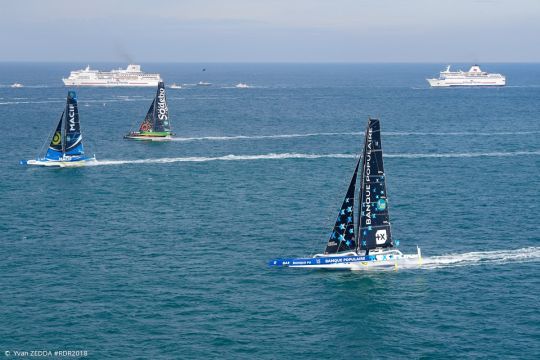
Why between Saint-Malo and Pointe-Ã -Pitreâeuros?
The sugar and rum producers wanted to make a name for themselves, so it was only natural that the destination was chosen. All that remained was to find a starting city. Michel Etevenon, creator of the race, contacted Saint-Malo who accepted. A departure in the cold for an arrival a few days later in the warmth of the West Indies.
Why alone?
A man or a woman, a boat, the ocean, a simple and easy to understand concept. Especially in France, where we like solo races. And especially when women are on equal terms with men.
The skippers all start from the same starting line and at the same time, to cover 3,543 miles.
Why such a success?
Why did the Route du Rhum become a legend? First of all, because of the extraordinary final of the first edition in 1978. 98 seconds between Mike Birch's little yellow trimaran and Michel Malinovski's big blue monohull after 27 days at sea.
The Route du Rhum was marked by great successes such as the superb victory of the " little bride of the Atlantic", Florence Arthaud the first woman to beat men. But also by dramas like the death of Alain Colas in 1978 loïc Caradec's in 1986.
The success is also due to the mix of amateurs and professionals, which allows small and medium-sized companies to benefit from mass media coverage without a large budget.
Why every four years?
Like all major sporting events, such as the Football World Cup and the Olympic Games, the Route du Rhum is held every four years, alternating with the Vendée Globe, another major French race.
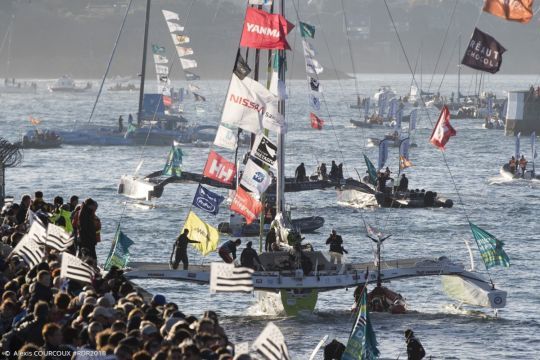
Who owns the event?
At its inception, it belonged to Promovoile, a company created in 1976 by Michel Etevenon. After the death of its creator, in 2001, the Route du Rhum was? bought by Pen Duick, a subsidiary of the Télégramme Group. Since 2014, Télégramme has bought OC Sport, which is now the organizer.
Who organizes it?
The Route du Rhum destination Guadeloupe is an event organized by OC Sport Pen Duick with the participation of the city of Saint-Malo and the region of Brittany for the departure operations, and the Region of Guadeloupe for the arrival operations.
OC Sport Pen Duick has been organizing many other sailing events for 30 years such as The Transat, La Solitaire Urgo Le Figaro...
Why mix amateurs and professionals?
The diversity and the mix of genres are the main characteristics of the race. Thus we can find amateurs alongside the greatest skippers.
Why different boats?
This is the DNA of the race. True to its values of openness, the Route du Rhum therefore welcomes all yachts from 39 feet upwards. If there were four classes in 2014, in 2018 there are two more. The Rhum class has been divided into two: Rhum Mono and Rhum Multi to welcome even more people and provide them with a different classification. Since the first edition, the race has always been won by a multihull.
Ultim the queen class of maxi-multihulls, flying boats 32 m long and 23 m wide
Ocean Fifty multihulls of 50 feet, 15 meters long and wide, all belonging to the same class
IMOCA vendée Globe monohulls, the most successful of which are equipped with foils
Class40 12.1 m long monohulls whose size makes it possible to restrict operating budgets
Mono Rum monohulls of less than 39 feet that cannot enter one of the other classes
Multi Rum multihulls from 39 to 60 feet that cannot enter another class
Router or not?
The class rules define the use of a shore-based router. The help of a weather specialist is allowed in all classes, except in IMOCA and Class40. These skippers have to set their course on their own.
How much does it cost to participate in the Route du Rhum?
The registration fees depend on the class of the boats:
